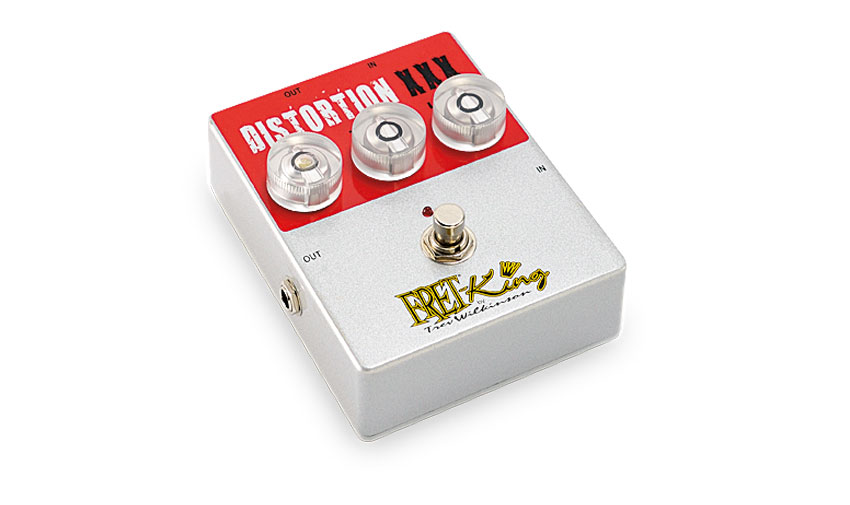MusicRadar Verdict
A reasonably priced and versatile source of familiar distortion.
Pros
- +
Rich distortion tones. Connection options.
Cons
- -
Not a lot.
MusicRadar's got your back
The three-knob Fret-King Distortion XXX has a rich, thick distortion voice and seems to be very much in the vein of a Pro Co RAT.
"If you're going to design a distortion pedal then it should distort but still with tone"
We all have our own tastes when it comes to distortion pedals, and while they're designed to do a similar job, each has its own 'voice'. The man behind Fret-King, Trevor Wilkinson's opinion is that all distortion pedals are pretty much based on the same circuitry, but it's the different values of capacitors, resistors, pots et al that can give each a distinctive voice - and if you're going to design a distortion pedal then it should distort but still with tone.
Whether you're thrashing out chords, riffing or looking for some harmonically rich sustain for solos, a combination of the Distortion XXX's gain and level knobs will let you call up plenty of different shades of distortion that could do the business for numerous music genres right through to full-on metal, all with a tone knob that offers a wide range so you can focus on just the right frequency band.
Want all the hottest music and gear news, reviews, deals, features and more, direct to your inbox? Sign up here.
Trevor Curwen has played guitar for several decades – he's also mimed it on the UK's Top of the Pops. Much of his working life, though, has been spent behind the mixing desk, during which time he has built up a solid collection of the guitars, amps and pedals needed to cover just about any studio session. He writes pedal reviews for Guitarist and has contributed to Total Guitar, MusicRadar and Future Music among others.

